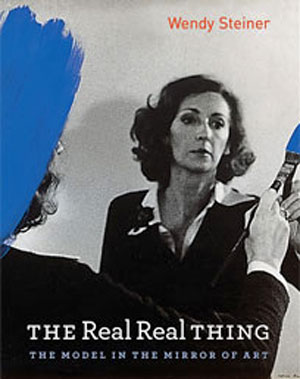
Traditionally, the arts have been valued for providing a sphere of imaginary, virtual experience, in contrast to the reality of everyday life. But today, as our profiles and avatars stand for us on the Web and messaging replaces face-to-face contact, everyday life includes virtual experiences of every sort.
It is increasingly difficult to tell where reality leaves off and artifice begins when screens, hype, and imagery permeate every moment of our existence. Under these circumstances, the role of the arts has necessarily been shifting.
The Real Real Thing investigates the situation of the arts when “virtually everything is virtual.” If the abstraction, surrealism, and formalism of the 20th-century avant-garde insisted on art’s contrast to the real, 21st-century artists often see art as a way to reconnect audiences to reality, to provide access to the world outside the work of art.
We can see this tendency in the sudden prominence of nonfiction genres such as documentary, memoir, photojournalism, and portraiture, which until recently had the status of minor or sub-artistic forms. But the most significant symptom of this artistic reorientation is its preoccupation with the figure of the model. In recent literature, film, and visual art, models turn up everywhere.
In the most general sense, a model is an element in reality that an artwork represents.
Mont Ste-Victoire was the model for scores of Cézanne’s paintings—though that mountain had no intention of rendering up its image for art. But human models do. Whether in fashion photography, studio art, or celebrity publicity, models are real people who deliberately simulate the state of an image by posing. They are thus ideal symbols for the intersection of the real and the virtual so common in contemporary life. Susan Sontag wrote that nowadays “to live is also to pose.”
And though Sontag saw our identification with the inanimate image as a social danger, many artists present models quite differently, skillfully reshaping themselves into images as they pose and actively participating in the creation of artworks.
The Real Real Thing describes the innovative ways contemporary artists have developed to communicate the reality of models and their creativity.
Contemporary art shifts the focus of value from the work and its creator onto all parties involved in aesthetic experience. A new politics of art arises in the process. No longer is the real person who posed for a work to be treated as irrelevant to its creation, and no longer are the real people who experience it to be seen as passive recipients of it. In this interactive aesthetics, the roles of model, artist, audience, and artwork reverse and overlap, power circulates freely, and the experiences of empathy, equality, and reciprocity become central values.
“If the abstraction, surrealism, and formalism of the 20th-century avant-garde insisted on art’s contrast to the real, 21st-century artists often see art as a way to reconnect audiences to reality, to provide access to the world outside the work of art.”
The Real Real Thing shows early 21st-century culture wrestling with new media, technology, and science. The book is the third in a loose trilogy that began with The Scandal of Pleasure: Art in an Age of Fundamentalism (1995).
The Scandal of Pleasure, a response to the Culture Wars, defends the arts against censorship and literalist interpretations on the grounds of the virtuality of art, its difference from reality.
The next in the sequence, Venus in Exile: The Rejection of Beauty in 20th-Century Art (2001), argues that beauty is again becoming a central goal in art after a long period of neglect and outright hostility on the part of the avant-garde. But now, instead of being valued as a property of artworks, beauty is prized as an interaction among the real parties involved in the experience of art.
The Real Real Thing elaborates this interactive aesthetics explored in contemporary works of art. By focusing on the model, “that which art represents,” contemporary works elicit a reality with an independent existence outside the work. A real model interacts with a real artist, and a real audience perceives the resulting creation. Works about modeling thus signal the reality of the creative and communicative interactions involved in the experience of art.
So here I might appear to be contradicting the central premise of The Scandal of Pleasure: that art functions in a virtual relation to everyday experience and hence that it would be a mistake to deal with an artwork as we would deal with everyday life.
But this contradiction is only apparent. Nonfiction, documentaries, reality TV, interactive art, and all the rewriting of modeling myths conceivable could not eradicate the virtuality of art. Instead, the emergence of these reality genres indicates the re-orientation of the arts toward a new set of conditions in reality.
It is only two decades since the Culture Wars that provoked Scandal, and yet the challenges the arts address today seem entirely different. The problem now is not that art will be treated as a threat to the body politic, but that the body politic has become hard to distinguish from art.
Not just artists, but all of us are concerned with the issues the model raises: power differentials in the process of communication, the permeation of the media into everyday existence, and the value of art in the buzzing circuit board we call reality. Paradoxically, the previously marginal figure of the model has become a valuable symbol for the hopes and ironies of the current situation.
Since The Real Real Thing covers a lot of ground, readers casually dipping into it might form very different ideas about what sort of book it is. If they happened on the discussion of Genesis in which God is the first model, they might see this as a work of historical scholarship. If they began with the chapter on Warhol and Dylan as artist celebrities, or the one on the interactive politics of Hairspray, they might assume they were dealing with a pop culture study. A quick dip into the section on bioethics and bio art might suggest a futuristic orientation, the one on women artists-models might sound like feminist art history, and the one on the art of the Disappeared might indicate politically engaged theory.
I would not be sorry if The Real Real Thing elicited any of these interpretations, since it is an attempt to show how myth, philosophy, pop culture, technology, politics, and ethics come together in the figure of the model in contemporary art.
“Models are real people who deliberately simulate the state of an image by posing.”
I have two wishes for readers of this book.
First, I hope the model provides a useful focus for them in approaching the diversity of contemporary culture. Second, I hope readers will emerge from this book with an alternative to the negative view of media so commonly espoused by intellectuals.
The advent of computers, the Internet, bioengineering, and the other astounding technologies of our day is at least as disorienting as the advent of the printing press or photography was in centuries past. Media revolutions require a vast amount of cultural processing, and artists are among those most actively contributing to this effort. Through the idea of the model, artists in our day are showing us not only the dangers of new technologies, but their extraordinary humanistic potential.
The Real Real Thing dramatizes this contrast of views through a quip by Susan Sontag and a novelistic interchange by Christopher Bram.
Susan Sontag reacted in disgust at the American soldiers’ posing beside their torture victims in the Abu Ghraib photographs. If the seventeenth-century empiricist Bishop George Berkeley could declare, esse est percipi, “to be is to be perceived,” Sontag sees modeling as the percipi of the media-saturated, those driven to objectify and be objectified, to experience authenticity only in the act of presenting themselves to public view: “To live is also to pose.”
Those who gaze on the model are just as frequently declared the passive ones. “The people” in contemporary democracies have been reduced to viewers of their leaders’ “appearances.” According to the political scientist Jeffrey Edward Green, “The relationship between actor and spectator, in its current form, threatens the political equality prized by democracy.”
But if, for some, the culture of the gaze is a disgrace, for a surprising number of artists, filmmakers, and writers, it is nothing of the kind.
In Christopher Bram’s novel Gods and Monsters, for example, the protagonist James Whale poses for a fellow art student. “’What I don’t like is I sit and you draw,’ he says. ‘Not fair, John. Not democratic.’” Obligingly, John undresses, too, and both men pose and draw each other. “Whale is relieved, pleased. They have corrected the balance of things, made themselves equals. One of the joys of art is that it introduces a new hierarchy into the world.”
It is not an exaggeration to say that the introduction of new hierarchies into the world—in gender, race, and artistic experience—has been a defining imperative in recent art.
This episode reframes Sontag’s dictum as follows: “to live is also to communicate,” and its goals are the democratic values of equality and empathy. I would be pleased if the reader of The Real Real Thing came away with an appreciation of this ethical potential in our perplexing new identity as models.


Wendy Steiner, a Canadian, is the Richard L. Fisher Professor of English at the University of Pennsylvania, where she was Founding Director of the Penn Humanities Forum and past Chair of the English Department. Besides The Real Real Thing, featured in her Rorotoko interview, her many books include Venus in Exile and The Scandal of Pleasure, named as one of the 100 best books by the New York Times (1996). Steiner has created librettos and multi-media productions for two operas, The Loathly Lady (2009) and Biennale (in process), and co-created a real-time music visualization, Traces on the Farther Side (2011).